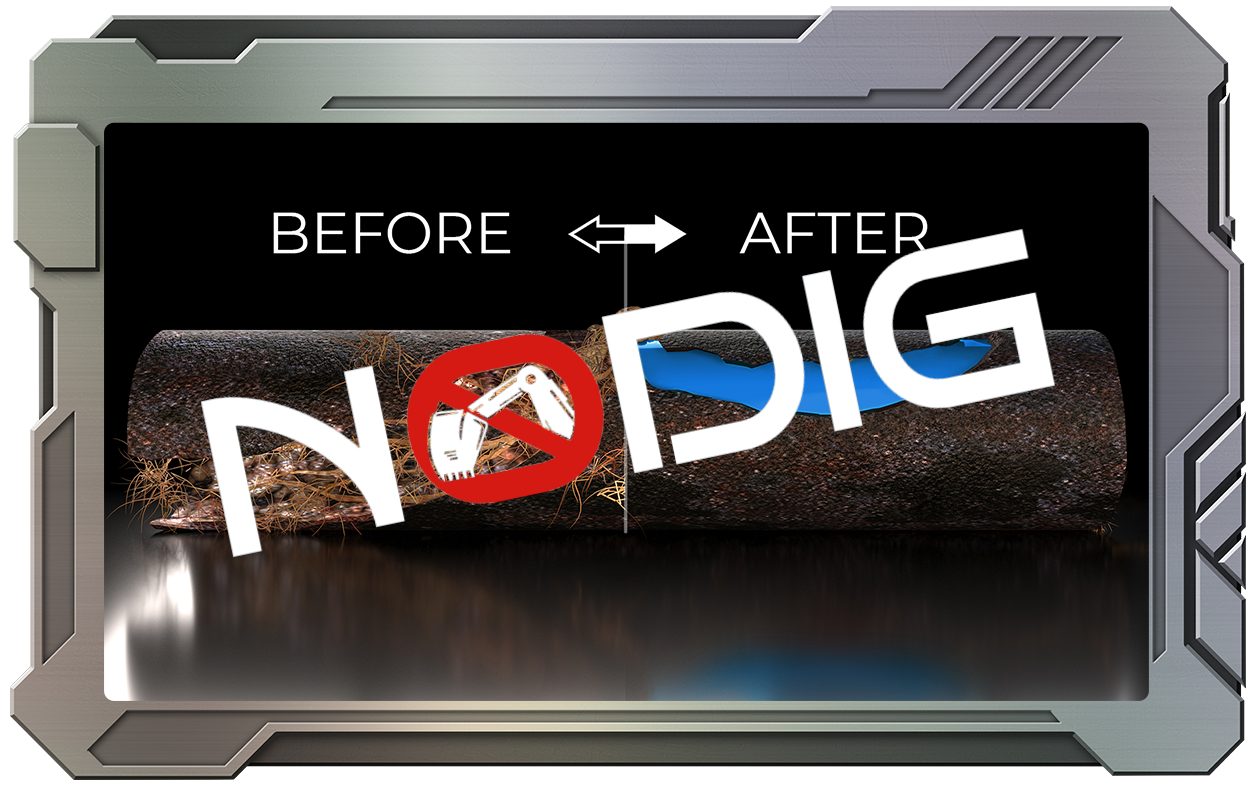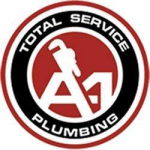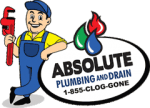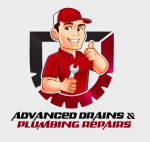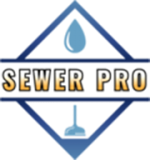A sewer lateral is the sewer line that connects your home's plumbing to the public sewer system.
Many problems can occur if your private sewer lateral is poorly maintained, from intrusive tree roots to clogging.
As a homeowner, you're responsible for the upkeep of the sewer line within your property line.
Let's look into the basics of lateral sewer lines and what you can do as a property owner:
Lateral Sewer Line Explained
A private sewer lateral (PSL) is the pipe connecting your home's main sewer line to the city sewer system.
The private sewer lateral transports all the sewage and waste from sinks, toilets, and floor drains to the public sewer.
About 80% of households in the U.S. use the city's sewer system for wastewater disposal, while the remaining 20% have septic tanks.
The sewage collected is then carried to a wastewater treatment facility.
Laterals are made up of two parts:
- The upper sewer lateral - The upper sewer lateral is the part closest to your house. It starts from where the pipes leave the home up to the building cleanout or sidewalk.
- The lower sewer lateral - The lower sewer lateral is located underneath the public road. It starts at the end of the upper lateral to the city sewer line in your street.
If there is no building cleanout, the lateral is NOT split into upper and lower laterals.
Who Is Responsible for the Sewer Lateral?
Sewer lateral maintenance is the responsibility of the property owners.
For most cities, a property owner is responsible for the maintenance and repair of BOTH the upper lateral and the lower lateral.
Some cities only require the property owners to maintain the upper sewer laterals, like in Albany, Alameda, and Berkeley, CA.
The right of way or sidewalk distinguishes the property line plumbing from the public sewer main.
When there is a problem with a local sanitary sewer, it determines who is responsible for repairs.
The property owners are liable for the pipe on their side, and the city is responsible for the repair on the other side.
Check your local ordinances to find where the demarcation line lies in terms of sewer line repair.
What Are Some Problems That Affect the Lateral Sewer Line?
When it comes to sewer line problems, the condition of private sewer laterals is an important consideration.
A functional sewer lateral ensures that the sewage and runoff end up in the local sanitary sewer.
The common problems with sewer laterals come from blockages and cracks in the pipe.
How do you know that there's a problem with your sewer lateral when it's underground?
Look for trees growing faster than others or green spaces with more grass. If you see bubbles or smell foul odors from the toilet, you likely have a sewer lateral problem.
You can also do a sewer video inspection to find the cause of any sewage issue.
Let's look at the common problems that can happen to your lateral sewer line:
1: Soil Failure
When the soil in your property is displaced, it can put pressure on your sewer lateral. It results in cracks and leaks that damage your sewer main.
What causes soil failure?
Soil shifts due to flooding, rain, drought, or freezing temperatures.
Poorly compacted soil near sewer lines can also lead to sinkholes.
2: Old Pipes
Sewer lateral pipes eventually wear down with age. When sewer lines erode, they are more prone to fractures and breakage.
The lifespan of a lateral depends on the materials used to construct the pipe.
The most common lateral sewer lines are clay pipes, which have limited durability. The pipe hub and joints can break down, leading to pipe failures.
A cast iron private sewer lateral also erodes over time, making it prone to leakage.
Although modern pipes nowadays are made from polyvinyl chloride (PVC), sewage pipes from the 1970s tend to be made from clay or cast iron.
Aside from PVC pipes, another common material is high-density polyethylene (HDPE).
HDPE pipes are also widely used because they are incredibly durable, affordable, and easy to repair.
3: Clogs and Backups
Your private sewer lateral takes all the sewage from your house, including grease, oil, and other materials.
Wastewater can build up in the pipes, and the channel becomes narrower, leading to blockages.
Items like toilet paper, feminine hygiene products, and other objects that go down the toilet or floor drain can also obstruct the sewer lateral.
The sewer lateral pipe can end up clogged with untreated sewage that can't escape into the main sewer lines.
To avoid this, I recommend you only flush toilet paper and waste in your toilets. Do NOT dispose of grease down the drain.
4: Tree Roots
If you have any trees in your property line, they will inevitably grow.
Tree roots seek out the nutrients from the wastewater in your private sewer lateral. The roots will puncture the joints to get to the sewage.
When that happens, the tree roots will invade the pipe until they clog your sewer lateral.
Roots can also easily grow through your sewer lateral, which can lead to leaks.
Repair Options You Should Try if Your Laterals Are Damaged
If you encounter any of these common problems, a video inspection can help pinpoint the cause.
This method determines whether your sewer lateral can withstand pressure. It detects the specific issue of a pipe so you can find the best solution.
Consider the following repair options if you have a damaged sewer lateral:
Trenchless Sewer Repair
This technique means no destructive digging is involved in exposing lateral pipes.
A trenchless repair restores an existing pipe internally. It only needs a few access points instead of tearing apart surfaces like floors or foundations.
There are different types of trenchless sewer repair methods:
Pipe Lining
This method uses an epoxy liner to create a new pipe inside the old one. Pipelining helps seal cracks by inflating the tubing.
Pipelining results in a sturdier sewer lateral that promotes better passage for the sewage.
The plumbing company can line the part where the problem is or restore the whole pipe itself.
This repair technique is commonly used for mild damage and localized cracks.
Pipe Bursting
For severe sewer lateral damage, pipe bursting is used to replace an entire pipe.
Pipe bursting involves expanding the existing pipe while replacing it with a new pipe made from high-density polyethylene (HDPE) at the same time.
This method uses a bursting head that breaks through the existing pipe. Because the head is small, it effectively ruptures the old pipe.
The back of the bursting head is attached to the new pipe, which is dragged inside the existing pipe.
Conventional Repair
Compared to trenchless repairs, traditional repairs involve excavation and digging.
Traditional sewer repair requires trenching through soil, asphalt, and concrete to find the damage and restore it.
For minimum pipe damage, only certain parts of the pipe need repair.
In more severe cases, like in a tree root intrusion, the WHOLE pipe needs to be removed and replaced with a new one.
Environmental Requirements for Private Sewer Laterals
For homeowners, your sewer lateral should adhere to environmental requirements. A broken lateral sewer line poses MAJOR environmental risks if not urgently repaired.
Because it flows to the public main, the Environmental Protection Agency (EPA) mandates that all private sewer laterals must be certified.
A property owner should comply with these regulations to avoid contaminating the public water supply.
There are two major concerns when it comes to broken laterals:
Exfiltration Failure
Exfiltration failures cause untreated sewage to flow out of the pipe and into the ground.
This sewage failure stems from cracked or broken pipes. Wastewater from laterals contains harmful pollutants and biohazards.
It can contaminate ground and surface water, which can threaten public health.
Inflow or Infiltration Failure
A more common problem is inflow or infiltration failure, which results from rainwater or groundwater runoff getting into the pipes.
Groundwater runoff seeps from water that flows down the street into the cracks and joint failures of sewer pipes.
The excess water overwhelms the sewer system, causing overflows that flood the street or bodies of water.
Infiltration failures affect downstream communities the most.
Frequently Asked Questions
To know more about sewer lateral pipes, below are related questions that can help you:
There are four ways you can find out if your sewer lateral is damaged:
- Slow drains - A simple clog can be resolved with a plunger or drain snake. However, if more than one drain is affected, you might need to clean out your sewer line.
- Mold and mildew - If you notice signs of mold and mildew growth, especially in the basement, it could be due to a sewer backup from a broken lateral.
- Foul odors - Weird smells can also be indicative of a broken line. It can be toxic sewer gas that is seeping into your home.
- Pests - Insects are attracted to stagnant water as a breeding ground, and rodents live in sewers. If you see these pests in your house, it could be due to cracks in your sewer line.
Doing a sewer video inspection would be ideal to confirm whether you have a problem with your sewer line.
In the case of sewer repair or replacement, a licensed plumbing contractor is well-qualified for the job.
Make sure you hire a credible professional to repair and replace sewer lines.
Knowing when to clean your pipes can help you avoid bigger issues in the future.
Plumbing services recommend that you clean your sewer lateral every 18 to 22 months, but a good rule of thumb is to clean it out as needed.
Contact a professional immediately to repair the damage. Do NOT attempt to clean the wastewater yourself.
Improper handling of contaminated water can put you or your family's health at risk.
Conclusion
A sewer lateral is a FUNDAMENTAL fixture in any house. It carries your house's domestic waste from your private plumbing to the public main.
It's every homeowner's responsibility to comply with environmental requirements to reduce the risk of contamination of water supplies.
Maintain your home's plumbing regularly to prevent serious lateral damage in the future.
It's great to be listed on NoDig
-
Join a network of verified sewer repair specialists
-
Get recognized
-
Update your business information
Unlock your listing in minutes.
